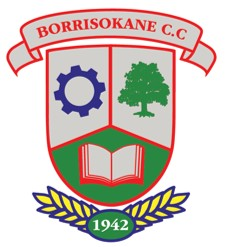On Wednesday, 9th of November, Transition year students at Borrisokane Community College received a talk on Biomedical Science and Engineering from Liam Brennan, a spokesperson from GMIT (Galway Mayo Institute of Technology).
Beginning the talk, he explained to everyone what exactly biomedical engineering is. It is a new branch of engineering which involves the creation of medical devices such as stents, instruments and materials, all of which are used to improve human healthcare. Biomedical engineers frequently use cutting edge technology to aid in such manufacturing.
He also explained that this specialisation of engineering also creates models of bones which help medical staff pinpoint the problems and work towards a solution. He showed everyone a few examples which included a skull, hand and a foot. However these bone structures were quite unique in that they were copies of the bodies of previous patients he had helped. The skull was that of an elderly lady who had cancer in her jaw and the model showed a large part of her mouth missing , indicating where the surgeons had taken out a piece. He explained that these models show exactly what the bone structure looks like and allows doctors to see exactly what it looks like.
In her case, she required reconstructive surgery. Liam went on to explain how they would take skin from her leg and apply it to her face during the reconstructive surgery.
Liam talked about numerous other cases, including a man who had been shot and who also had required reconstructive surgery. As he talked, he showed everyone pictures of such cases, during and after surgery. Many of the pictures were gruesome but truthful. I think that this really showed transition years considering a career in biomedical science or medicine exactly what that career would entail.
One of the pictures showed open heart surgery being performed. At this image, many gasps could be heard however attention soon returned to Liam as he explained that this surgery could sometimes be ‘ traumatic’ and he went on to explain that what the surgeons were doing was known as a heart bypass. This is needed when an artery collapses (sometimes due to a haemorrhage and blood cannot go to the brain. In this procedure surgeons insert a blood vessel graft onto the artery and the blood simply goes around the collapsed artery through the blood vessel graft to other parts of the body.
Liam then explained that other than this procedure, they could actually reopen the collapsed artery using a number of methods including stents and angioplasty. While on this topic, he showed everyone a nitinol stent. Nitinol is a nickel-titanium alloy which has shape memory. He demonstrated this as he bent the thin metal into a random shape and then proceeded to place the metal into a glass of water. Immediately the metal bent back to its original shape. This material is used for self expanding stents. When placed in a collapsed artery, they expand and reopen it.
As well as that, balloon angioplasty can also be used. This involves a long, thin tube called a catheter being inserted into an artery. There is a small balloon on the tip of the catheter which is inflated when it reaches the narrowed artery and compresses the plaque building up at the sides of the artery.
The talk was very educational and eye opening and gave an excellent insight into the career of biomedical engineering.
By Rachel O’Dwyer.


